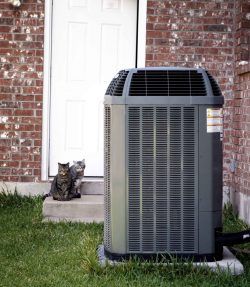What Is Two-Stage Heating?

Single-stage heating furnaces are popular in hot, humid areas as well as those with cold winter climates. These are designed to offer indoor comfort for very hot and cold days. This means that the HVAC systems operate at full capacity, even when it’s not necessary. This is where two-stage heating and cooling units come in to help save resources.
What is Two-Stage Heating?
Single stage units are designed to offer the maximum heating level that the furnace can yield, irrespective of outdoor and indoor temperature levels. This means that when the furnace turns on, it disperses the maximum amount of energy it is designed to produce. As such, this could result in high energy bills.
Multi-stage HVAC systems are named according to the number of levels of operation. Unlike their single stage counterparts, 2-stage HVAC units have two levels of cool and heat output. When the temperature is mild, the systems operate on low and can adjust to high if conditions change.
The first stage of such furnaces operates most of the time in many climates, and usually runs at about 65% of the unit’s capacity. The second stage provides additional heating when the first stage becomes insufficient to heat up the house. The equipment thus provided the right level of heating to satisfy the inhabitants’ needs.
Benefits
2-stage heating takes care of the fluctuations in temperature normally associated with conventional furnaces. This is because they’re regulated to remain within a small margin of the set temperature. The house thus remains within a comfortable temperature range, with no sudden dips or rises.
The heat pumps also offer longer cooling cycles. This results in more flow of dry air which lowers the risk of mold and mildew problems. Due to the constant stream of air passing through the filters, the equipment is also able to capture more pollutants.
The furnaces also operate at lower capacity in the first stage. This means that less energy is used when compared to a single-stage unit that operates at its entire capacity. As such, multi-stage furnaces operate more efficiently and run quieter.
The most viable option for any particular house needs to be chosen after considering several factors. Such include heating requirements, existing insulation and ductwork, budget as well as the size and levels of the home. It would be worthwhile consulting a professional contractor for advise on how to go about it.Follow us for more articles that will keep your heating and cooling systems running efficiently.

